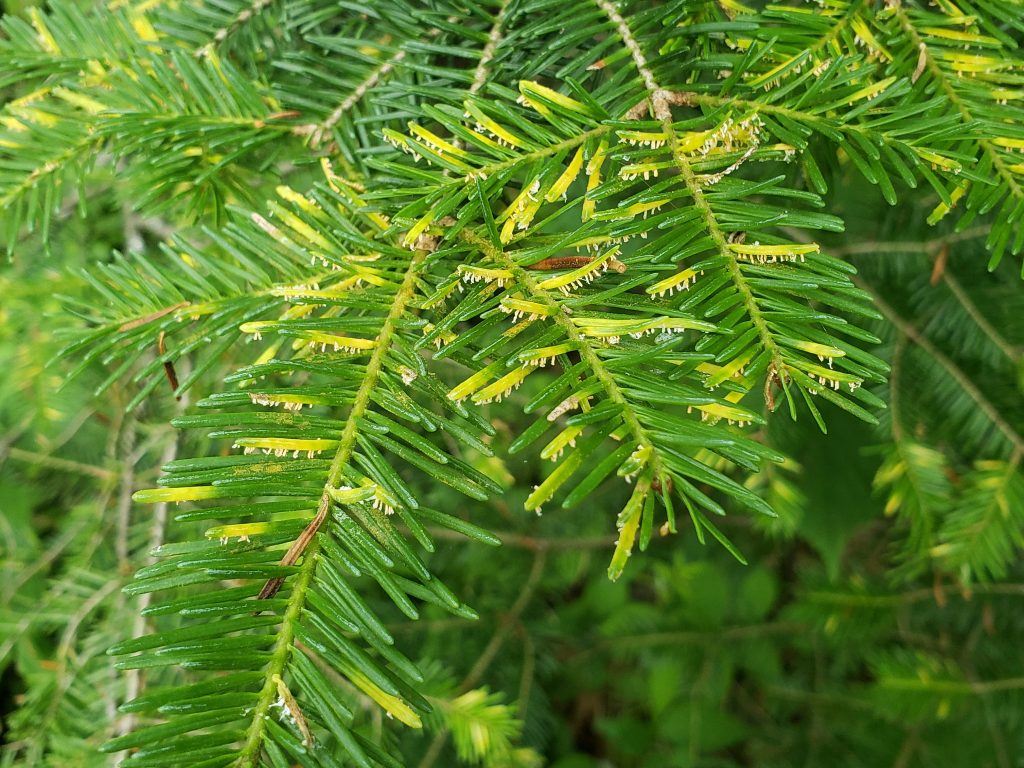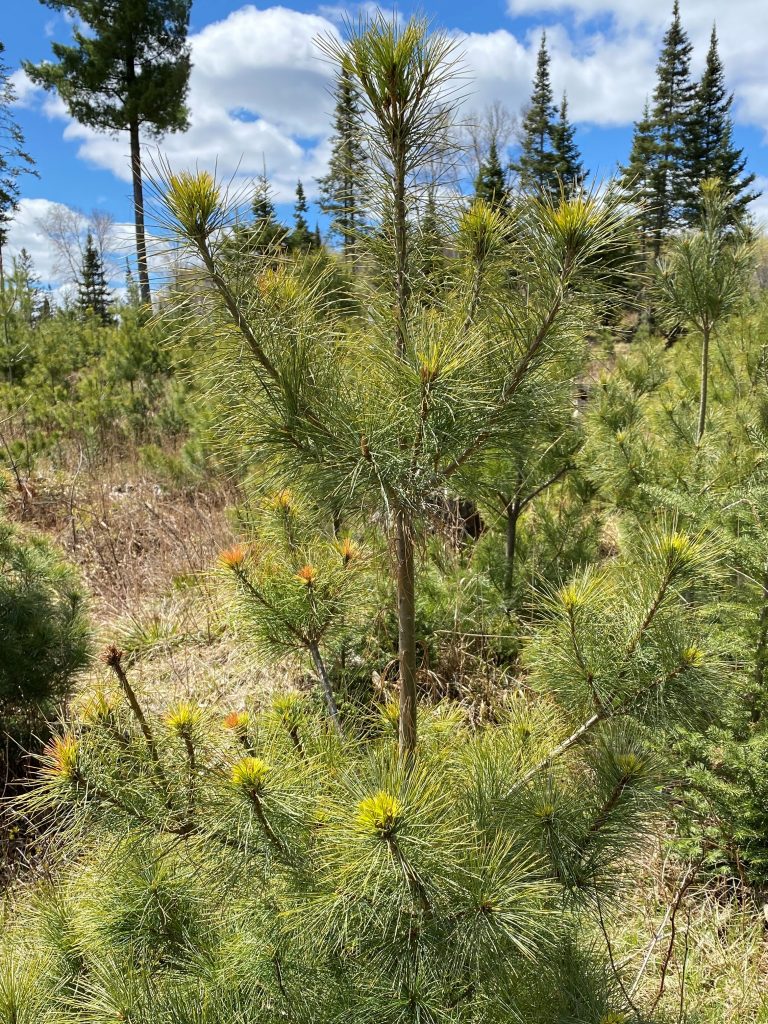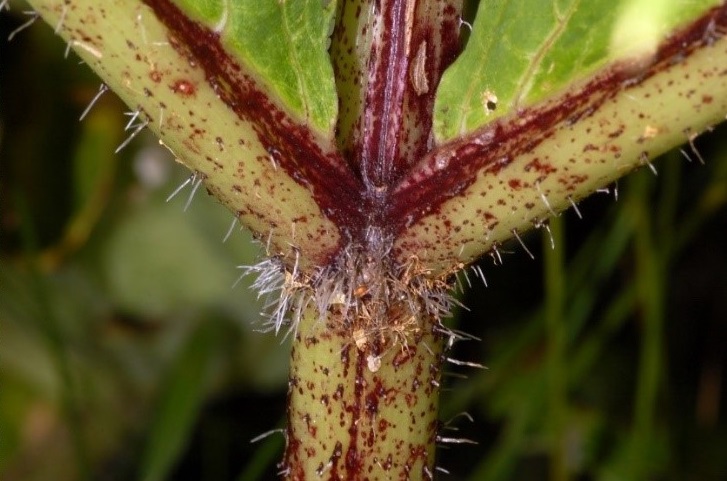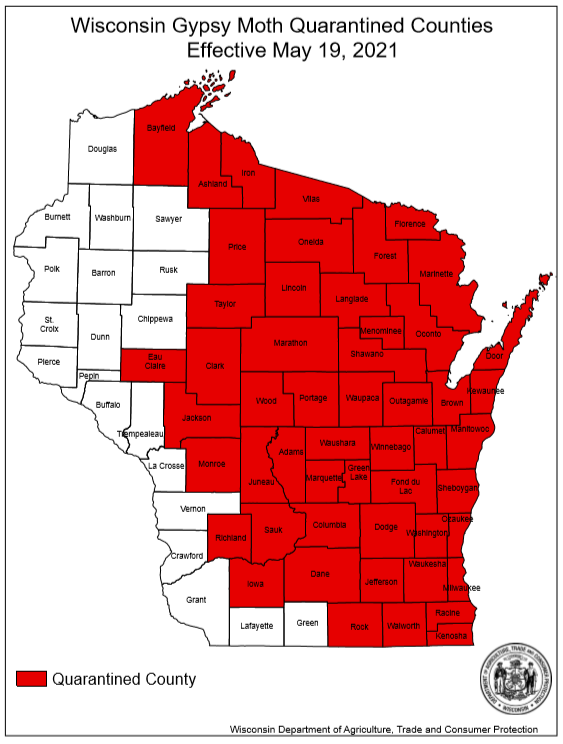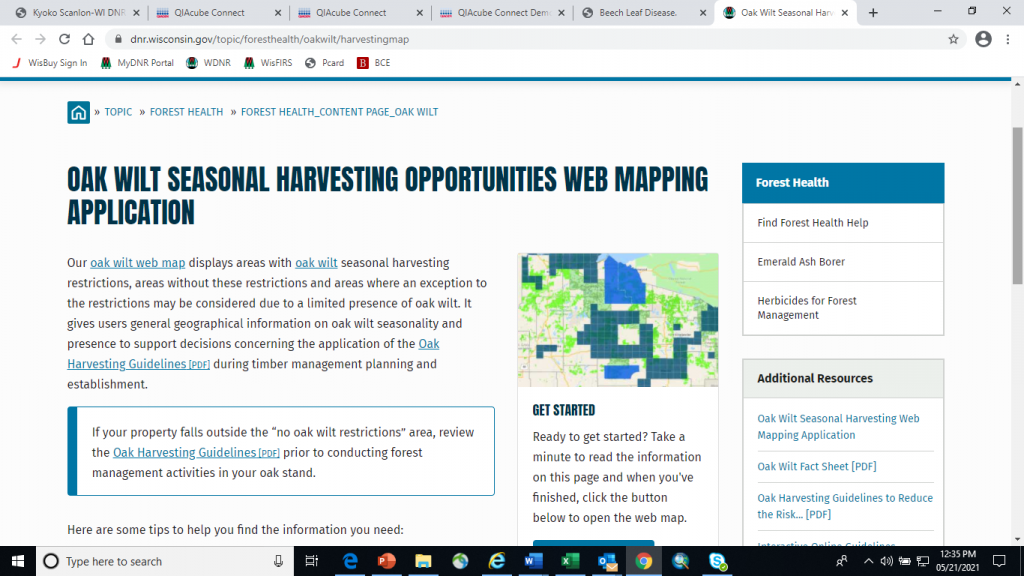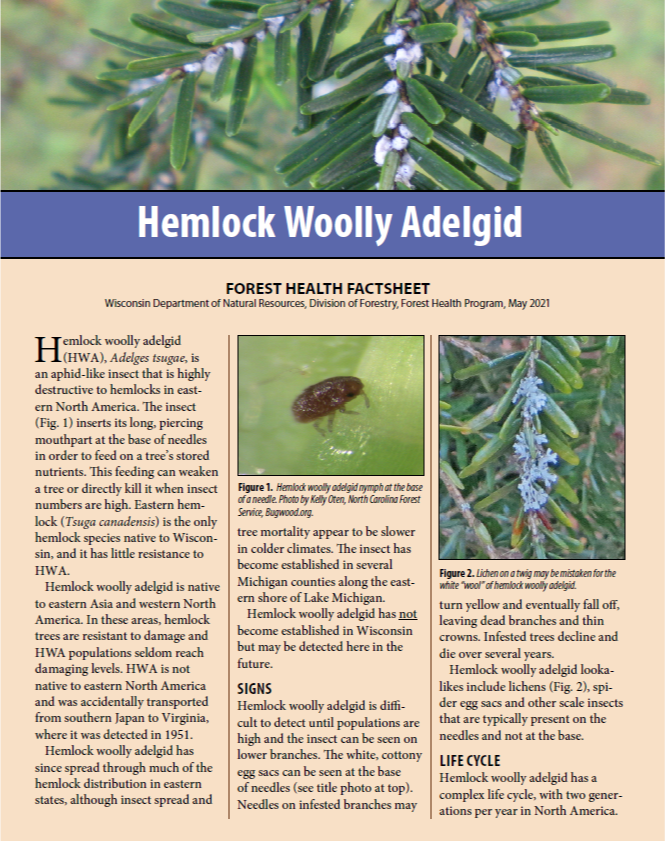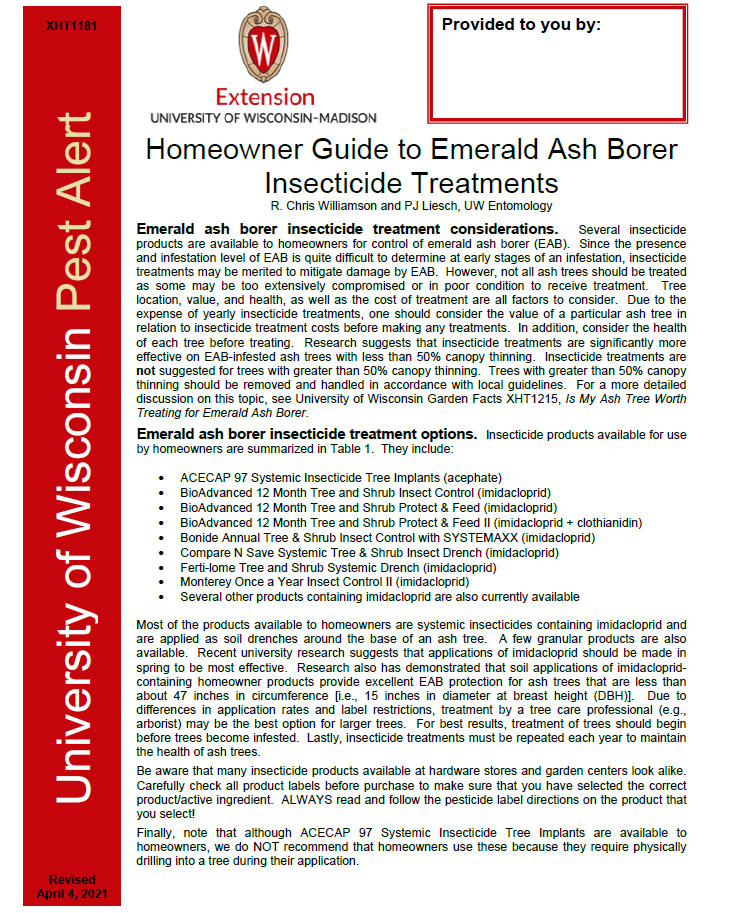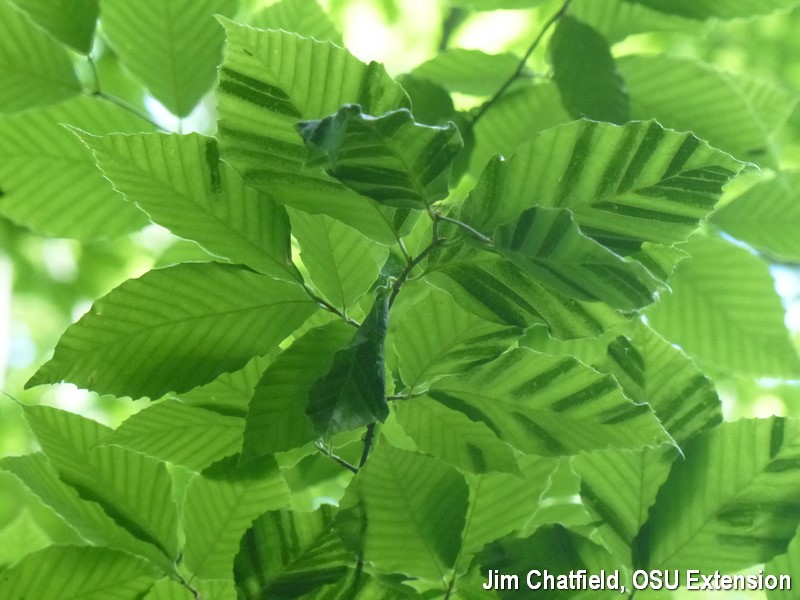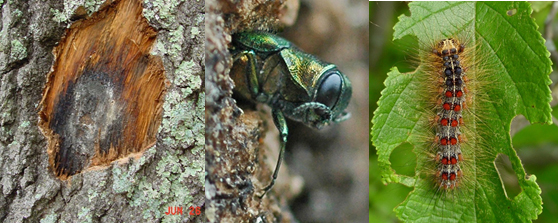Written by: Linda Williams, DNR Forest Health Specialist, Woodruff, Linda.Williams@wisconsin.gov or 920-360-0665.
A frost/freeze on the night of May 28 strongly impacted our oaks in areas of central and northern Wisconsin. Some leaves were completely killed while others had portions of the leaf that were impacted. Those leaves with some dead spots have continued to expand and grow but the dead parts of the leaf are causing them to curl and pucker.
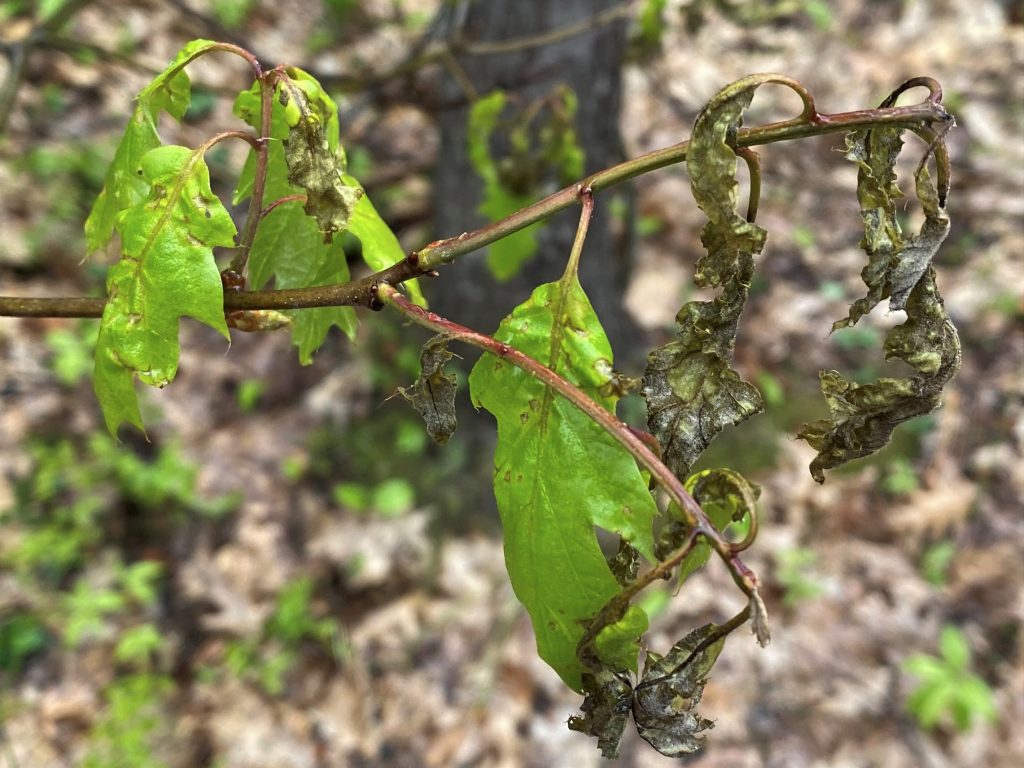
Oak leaves killed by the frost.
Continue reading “Oaks Hit Hard By Frost/Freeze Prior To Memorial Day”

